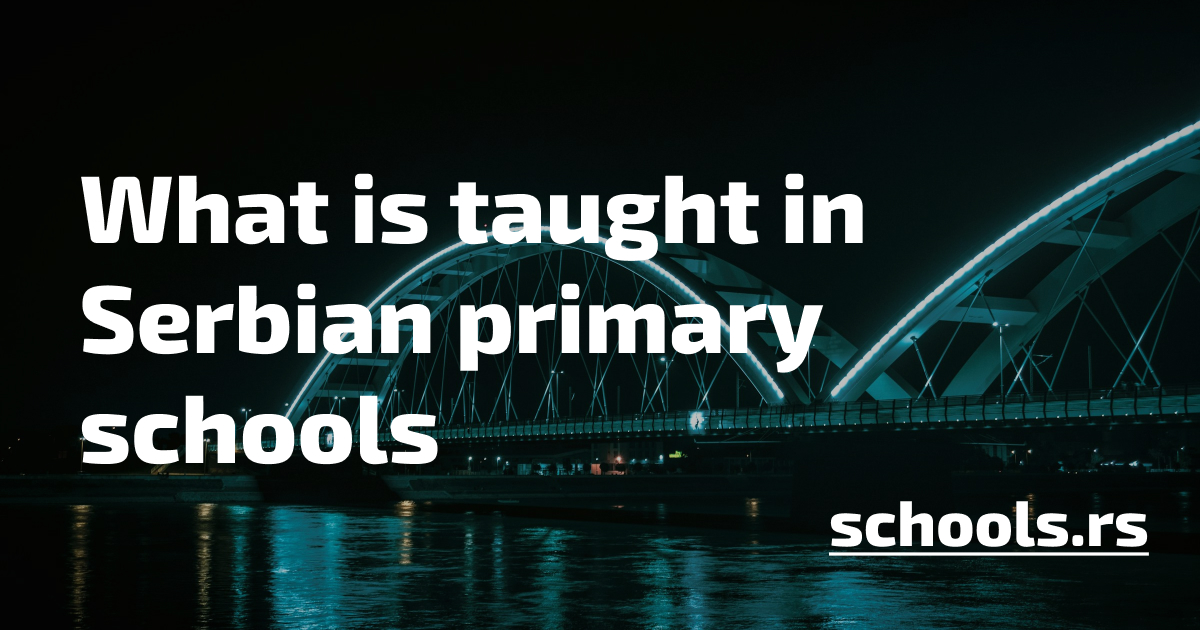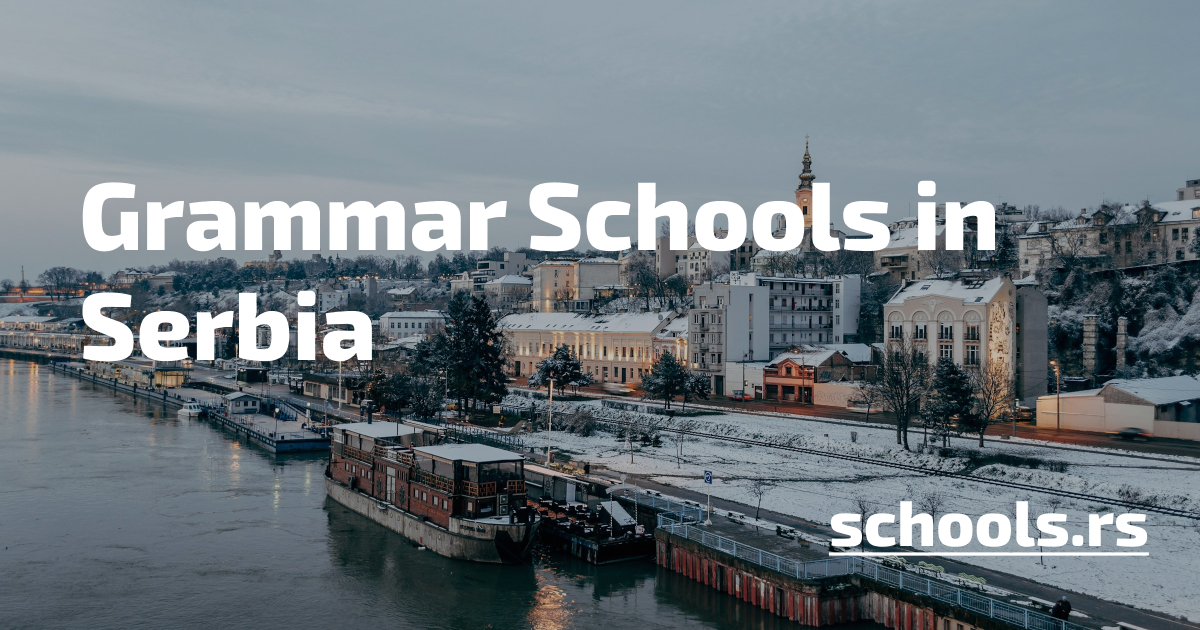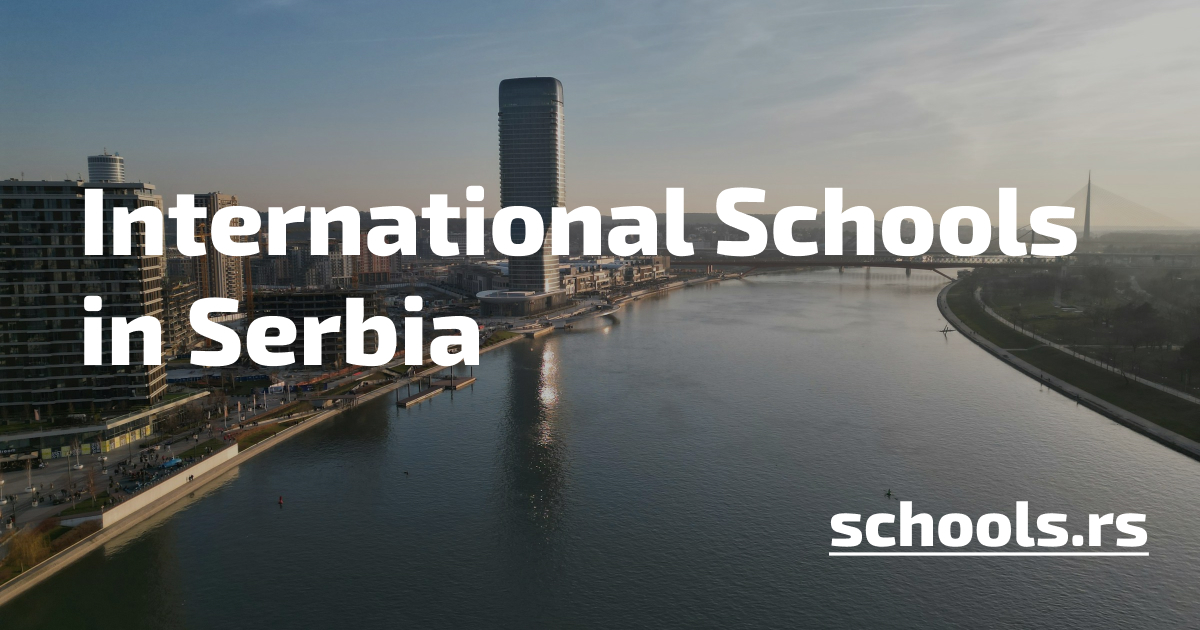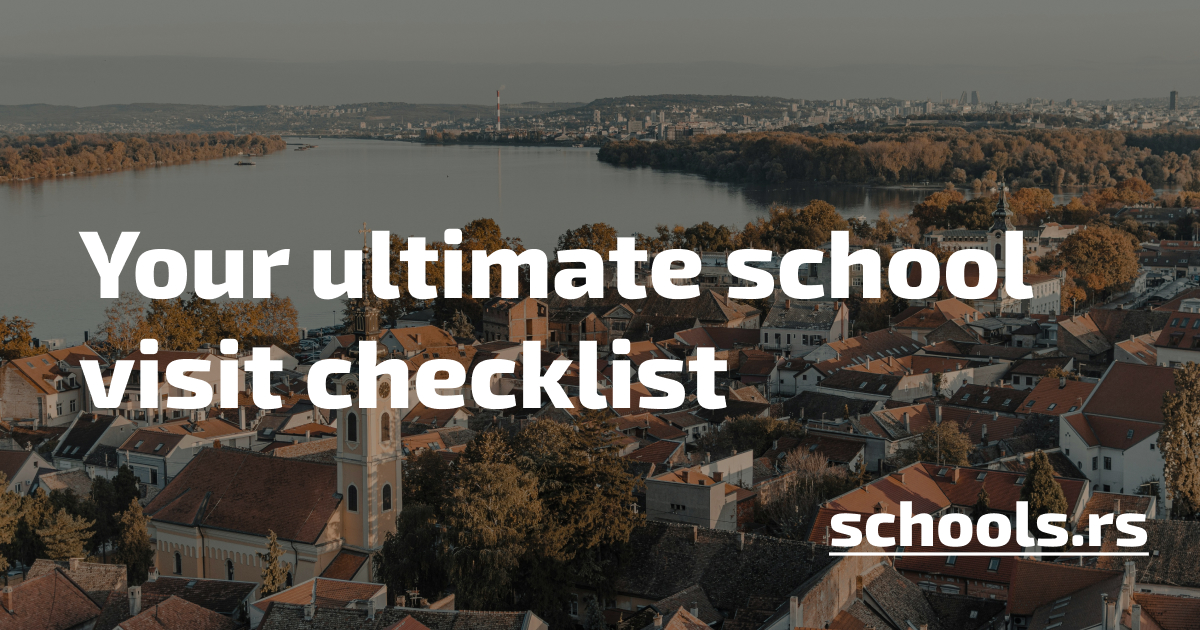Finding the Perfect Private School in Belgrade: Insights from a Real Family Experience
By Konstantin Levushkin · 8 minute read · Updated on June 5, 2024
In this article, we will discuss how to gather and analyze information about a school to determine if it suits your child and your family. This case demonstrates our approach to describing and analyzing schools and may be useful for families choosing a school on their own.
This article is based on a review of a real school in Belgrade - the private school Zvezdobrojci. This school made it to the shortlist we prepared for one family. As a result, after comparing it with other schools, the family chose Zvezdobrojci. This case well illustrates our approach to working with families, so we will describe it in detail.
Getting to Know the Family
At the first meeting, we discussed all possible educational strategies in Serbia and chose education in a Serbian private school.
- The family speaks Russian;
- The son is 6.5 years old and will start first grade next year;
- He spent a year in a preschool group (predškolska ustanova) at a Serbian private kindergarten and speaks Serbian quite well;
- It is important for the family that the school is attentive to the child’s needs and helps him adapt, as they recently moved to Serbia. On the other hand, they need a school with a strong academic environment so that the son can later attend an international school.
- The child is creative, curious, and sociable but does not like formal requirements that are often found in “big schools.”
- Budget - 7000-10000 euros per year.
- Travel time to school (the family lives in the Old Town) - no more than 20 minutes by car.
School Shortlist
After getting to know the family and clarifying their request, we compiled a shortlist of three schools:
- “Plavi krug”,
- “Mina Karađžić”,
- “Zvezdobrojci”.
After a more detailed study and visits to each school, the family chose Zvezdobrojci. In this article, we will tell you more about how we helped make this choice.
The sign on the gates appeared shortly before our visit. It was painted by the school’s students.
About Zvezdobrojci School
Zvezdobrojci is a private primary school in Belgrade, founded in 2017. The school follows the national curriculum of Serbia but adapts it to its own mission and values.
Location
The school is located in the Senjak area, where most international private schools are situated. The school’s address is Drinička 5, Beograd.
The school occupies a separate house with its own yard. Recently, the school acquired another building nearby for grades 5-8, located at Andre Nikolića 31, Beograd.
Curriculum
The school is licensed to operate in Serbia and implements the national curriculum (more about primary schools can be found in this article). Teaching is conducted in Serbian.
Compared to public schools, Zvezdobrojci offers more hours of English (3 hours) and a second foreign language is taught from the first grade. The school also has an extensive extracurricular program. The school day lasts from 8:00 am to 6:00 pm.
School Size
In the 2023-2024 school year, the school had no more than 50 students. There are no more than 15 students in each class. Currently, the school only has grades 1-7.
Tuition Fee
700 euros per month, which is 30% less than the cost of most international schools in Belgrade. This fee covers the entire school day, including meals.
Director and Owner
The director is Mladen Stevanović, a former director of Kralj Petar Prvi school, a literature teacher, and a writer.
The founder and owner is Milutin Nikolić, a Harvard graduate, a prominent investor and entrepreneur.
Social Media The school actively maintains its social media, especially its Facebook page and Instagram.
School Features
To describe the school’s features, we thoroughly studied its website, social media, press articles, and the school itself during a 2-hour visit with the family. We used our checklist to gather information about the school.
School Culture and Values
In a private conversation, the school director formulated the school’s mission as: “to educate students so that they become a better version of us,” and often repeats the phrase “back to the roots.” Overall, the school culture is child-oriented and focused on holistic development. This is reflected in several features and details, which we will show below.
👨👩👦 Family Comment
We have been reading and listening to Dima Zitzer, the director of the democratic school Apelsin in St. Petersburg, for a long time. We are close to the humanistic approach. It is important that the child feels comfortable at school, but at the same time, the school sets ambitious educational tasks, engages in learning, and fosters curiosity and a love of knowledge.
Curriculum and School Day
At Zvezdobrojci (the name translates to “stargazers” and this is no coincidence) the school day is one of the longest. The schedule includes many breaks, four meals (prepared at the school from farm products), and a large program of after-school activities.
👨👩👦 Family Comment
Such a long school day is unusual. We have never been apart from our son for so long, but it seems he will like it. The school looks like a big friendly house. It has many nooks to be alone, various activities inside and in the yard, and many adults to support him.
Teaching Approaches
The school has several original approaches and methods.
The most interesting is the so-called “forest pedagogy” (šumska pedagogija). This means that students spend a lot of time in nature, parks, and forests, where they conduct independent research with mentors at least once a month.
Photo from the school’s social media. Students celebrate International Forest Day with a geography teacher.
👨👩👦 Family Comment
Forest pedagogy immediately captivated us! Our son loves being in nature, sometimes it’s hard to get him out of the park. The fact that the school’s students spend so much time in parks and forests is very suitable for our son.
Another method used at the school is called NTC. This method, based on educational games, was developed in Serbia in 2008 and is now used in many schools outside of Serbia. More about the method can be found on this special website.
Photo from the school’s social media. Using this model, the geography teacher explained soil erosion. This same teacher organizes trips to the forest.
Various details indicate the school’s humanistic orientation:
- Teachers decide how long a lesson lasts. There are no bells in the school.
- In the lower grades, there are only descriptive assessments, not numerical grades.
- Classes are often held outside in the school’s yard.
- Classes are small, with desks arranged in a circle, and the teacher often sits next to the students. Students often work in groups and complete various creative assignments.
- There are many diverse educational materials in the classrooms, often made by teachers, and students’ work is displayed everywhere, indicating attention to their self-expression and modern approaches.
Teachers
The school employs young and very engaged teachers, many of whom work using the NTC method. During our visit, we met with the senior teacher, the physical education teacher, and the geography teacher. Here are some more details indicating the school’s humanistic approach:
- During lessons, teachers often sit with the students and try to be at their eye level;
👨👩👦 Family Comment
During the visit, we entered a classroom during a lesson. We were surprised by how calmly the children reacted to us and the fact that the teacher was sitting with them at one of the desks arranged in a semicircle. When we entered, they were discussing something animatedly while looking at a screen.
- The day always starts with gymnastics to wake the children up;
- The school’s administration and many teachers speak excellent English;
- There are many children’s creative and educational works displayed throughout the school;
- Physical education classes consider the children’s age characteristics, interests, and capabilities. The physical education teacher is a professional athlete.
- The teachers we spoke to emphasized the well-being and comfort of the students as the school’s main priority.
- There is a telescope in the director’s office, and children often study the sky from the school’s balcony with the teachers.
Admission
The school does not have a complex admission process, including for academic achievements. As in other schools, there is an interview with a psychologist. The child and family can spend a trial school day at the school. Parents also meet with the director to discuss educational and upbringing approaches. Since the school is small, it is important for the school to be “on the same page” with the parents.
There are already several Russian-speaking students at the school.
👨👩👦 Family Comment
It is important to us that our son will not be the only student from Russia at the school. This will support him initially during the adaptation period.
Practices
- Every month, parents receive a report with written feedback on the child’s progress.
- There are no bells in the school.
- There are no mandatory homework assignments. Everything that needs to be done is completed at school under the supervision and with the help of teachers.
- For those whose native language is not Serbian, separate lessons and support during classes are organized (the school director speaks Russian).
- Once a month, the school organizes a major outing in nature. In spring, there is an additional week-long trip.
- After classes, there is an extensive program: students can study or relax under the supervision of teachers. There are clubs for languages, theater, music, visual arts, a newspaper, reading, and creative writing. Sports are given special attention.
- The school frequently organizes excursions and various trips, and many different people come to the school to conduct workshops.
👨👩👦 Family Comment
Everything we saw at this school is done with such care for the child. It is important that this is not just a school where our son will be comfortable. He will definitely develop here, learn, engage in creativity, and socialize a lot.
Building and Classrooms
The school is located in a small estate with its own yard. Although the building was not designed as a school, it has everything necessary for studying: comfortable small classrooms, a dining room (combined with one of the classrooms), a kitchen where students can cook themselves, an outdoor and indoor sports area for bad weather, individual lockers, and a relaxation area.
Photo from the school’s website. This is a real garden that students care for themselves.
This is a table in the schoolyard where lessons are often held.
The schoolyard has its own sports area and even a small climbing wall.
All classrooms are somewhat different. They are assigned to each class. For younger students, this is very important.
The kitchen, where students can cook during workshops.
A large cabinet with educational materials: minerals, dolls, toys, and various models.
The preschool area is right next to the school director’s office, and he almost never complains about it.
👨👩👦 Why We Chose This School
At first, we doubted that a “manor-type” school would suit us. We wanted our son to go to a “real school” so that he could easily move to the next level of education, to a gymnasium or an international school, and eventually go to university. But all doubts vanished when we visited the school ourselves, talked to the teachers and the director. And then our son came to the school, and it became clear that this was an ideal match.
Now we feel very calm because we know that our son will be very comfortable, he will be taken care of, helped to adapt to the new environment, and supported in his interests (he is very creative and loves nature). The director assured us that it is very important for him that students do not get isolated in the school and the small community of students and teachers, which is why the school organizes so many outings and has so many guests.
Who This School Is Suitable For
Zvezdobrojci is a unique school with a very distinct philosophy and its own approach. At the same time, it seemed to us quite balanced: here, an individual approach is combined with a strong academic program. This school is suitable for families who:
- Plan to live in Serbia for at least a few years and plan to continue education in a Serbian school.
- Share the principles of humanistic pedagogy.
- Aim for the holistic development of the child.
- Are ready for a full-day school.
- Want a small “family” school.
- Value creativity in education and develop creativity in their child.
- Lean towards humanities and creative subjects and disciplines.
- Enjoy spending time in nature or, on the contrary, do not have time for it but want their child to spend more time outdoors.



